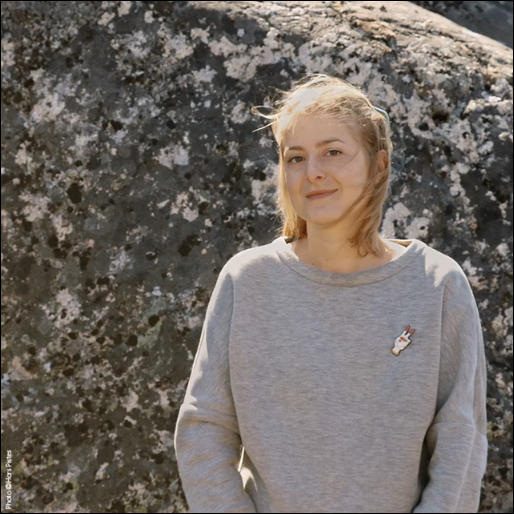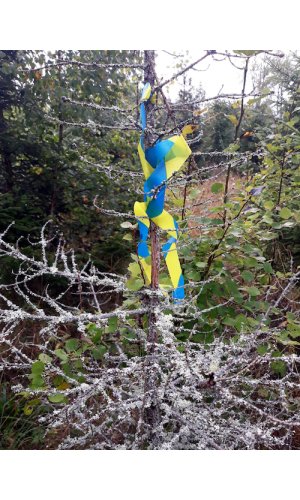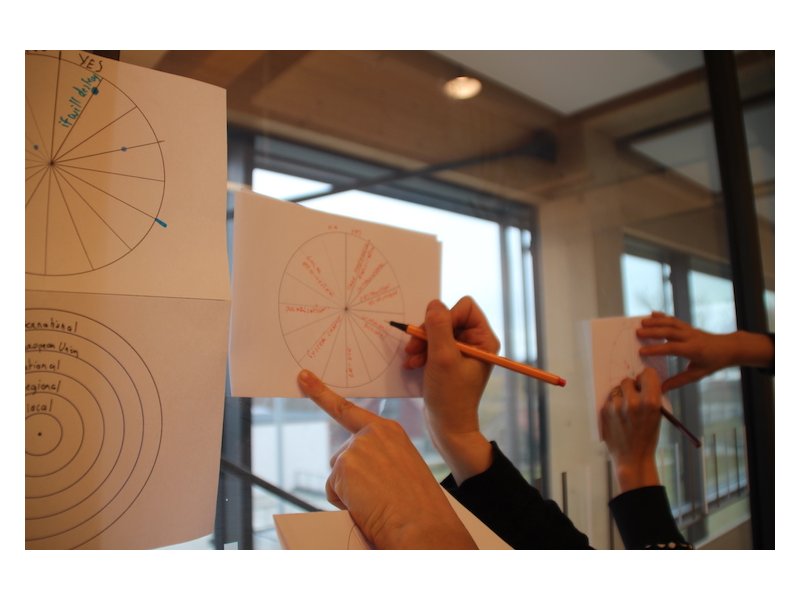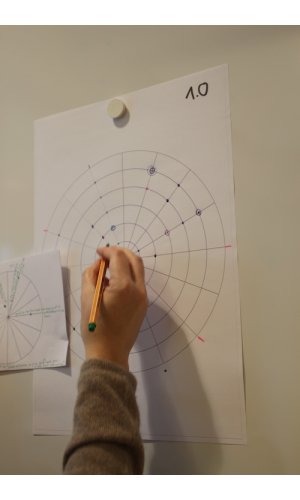AiR@SLU
- Resident Artist
- Residency Works
- Original call (closed)
The AiR@SLU, hosted by the Swedish University of Agricultural Sciences (SLU) in Uppsala, is part of the Mistra Environmental Communication (Mistra-EC) research program, and offers the selected artist the opportunity to investigate and explore environment and sustainability in collaboration with the research program and community. It is part of the larger residency programme (AiR) coordinated by the Mistra Environmental Communication Media & Art team at ICSJ, with additional support from the NGO Sqridge.
-
Resident Artist
Coralie Gourguechon

We are delighted to announce that Coralie Gourguechon has been selected as the resident artist for the AiR@SLU to be performed in Uppsala, Sweden. The residency will take place during September-October 2022!
Coralie is an interdisciplinary designer, researcher and artist from France. During the residency, she worked on a project, in dialogical exchange with Mistra Environmental Communication associates at the SLU, to create tools for communication about the impact of electronic consumption on the environment. In this work, Coralie specifically investigated the mining and recycling infrastructures used for the production of metals and rare earth minerals, with the aim to improve the collective dialogue about the future of electronic production.
Click to read Coralie's blog post about her reflections on the AiR@SLU and her residency project.
For more information about Coralie's works, please visit
Residency Works
A quest for a magnetic stone
A Quest for a Magnetic Stone is a project developed by Coralie Gourguechon, during AiR@SLU in Uppsala, Sweden (September-October 2022), in dialogical exchange with Mistra Environmental Communication Programme (MISTRA-EC) associates at the Swedish University of Agricultural Sciences (SLU).
The project set to create tools for communication about the impact of electronic consumption on the environment, by exploring the mining and recycling infrastructures used for the production of rare earth elements. Focusing on the case of a conflictual mining project in Norra Kärr, Sweden, the outcome was a mixture of conceptual installations and a paper tool to collect and organize different perspectives on the topic of mining for rare earth elements in Europe.
Here are some visuals from Coralie’s residency project:
Click here to view the full presentation
Looking for signs & Indices in Norra Kärr
The plastic ribbon seems to indicate the way toward places of geological interest; the pinkish rock is eudialyte and contains rare earth elements. Here, one can also see the traces of the tool used to extract it.


Photos from field trip (September 2022). Photo credit: Coralie Gourguechon.
Micro and macro visualizations of scale

Installation I. Data-visualization of the proportions of rare earth elements in rocks using the data from Norra Kärr and a calculation based on the size of the wall, to give a sense of the scale of extraction necessary to mine rare earth elements.
A square wall transformed into a cube of rock weighing 36 tons, using paper tape and signage to assign it a new nature. A subtle gradation suggest how it could be divided into 100 squares, giving a sense of percentage. A folded paper sheet visually creates the outlines of a volume: it represents 180 kilos of rare earth elements or 0.5% of the complete mass. The color of the background wall somehow creates a link with the “green” transition, a narrative that tends to make us forget about the materiality of the renewable energy infrastructures and electric vehicles' production in relation with rare earth elements (REE) extraction.

Installation II. The global scale of the rare earth elements production Using the university corridor as a giant map-ruler, the most significant mining countries were placed according to their distance from Uppsala. Through walking, the viewer move in space, observing the geographical occurrences of significant rare earths elements deposits, including both current production and potential future mining sites. They feature post-it information that give sense of quantities with production tonnage, with a different color code for current production and deposits.
POINT OF VIEWS: At the intersection of scales & perspectives

This paper tool aimed to collect and organize different perspectives on the topic of mining for rare earth elements in Europe, while connecting them with the perception of scale. Scales is organized centrifugally, with five circles, going from local to global. They represent the different levels of decision-making and the communities depending on them. Perspectives are organized radially with ten lines, with a gradient going from light to dark and from right to left. There are white spaces to write and organize its own different viewpoints across a decision spectrum.
When folding the paper in two and using a light source, perspective and scale overlap. When the point of view has a relationship with a scale-level, participants can place a dot on the intersection of the circle and straight line. This mean that this point of view is influenced by the perception of scale, a 3-dimensional opinion.

Original Call
Click to view the original open call for AiR@SLU